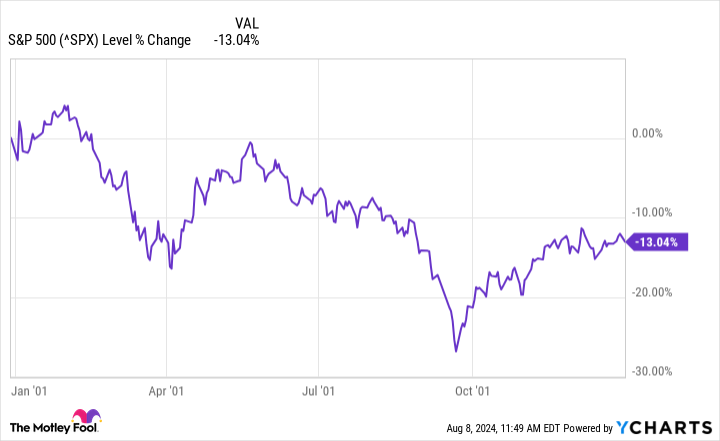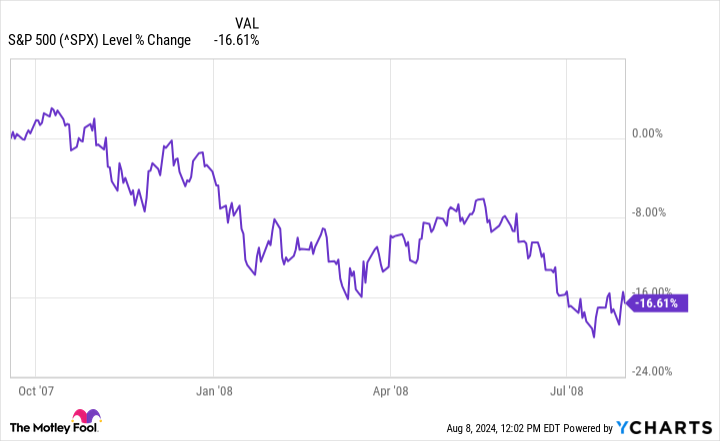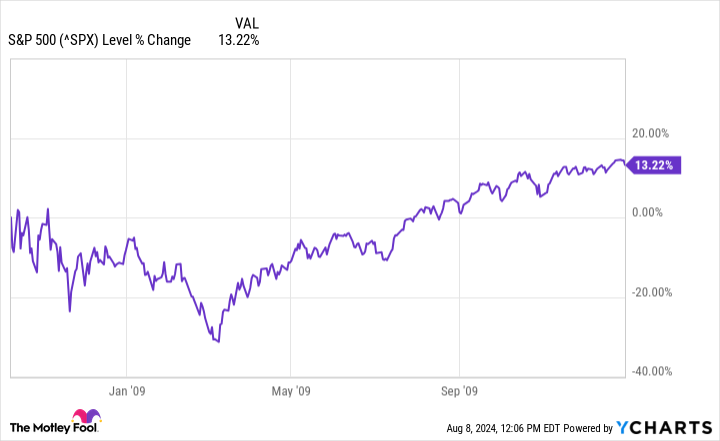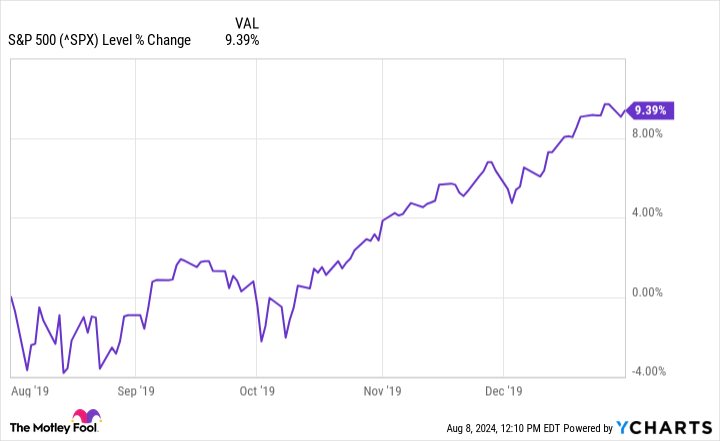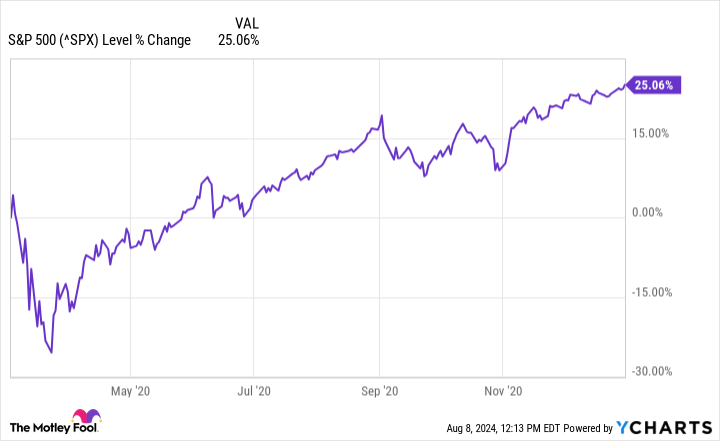Will the Stock Market Soar If the Fed Cuts Rates in September? Here's What History Shows.
Federal Reserve Chair Jerome Powell has mentioned two factors that could lead to interest rate cuts. One was inflation declining to near the Fed's 2% goal. The other was a weakening job market.
Both boxes have now been checked off. The Fed's favorite inflation metric -- the personal consumption expenditures (PCE) price index -- fell to 2.5% in June. July jobs numbers were weaker than expected.
The probability of a near-term interest rate cut has risen. But will the stock market soar if the Fed cuts rates in September? Here's what history shows.

Looking back
The Fed has lowered interest rates 28 times so far this century. These rate cuts came in spurts on six occasions.
In early 2001, the Fed began a series of 11 rate cuts. At first, these cuts were primarily due to the U.S. recession following the dot-com bubble burst. The terrorist attacks on Sept. 11, 2001 provided another catalyst for Fed action. How did the stock market respond? Not too well.
Although that recession ended in November 2001, the subsequent recovery wasn't very strong. The Fed stepped in with an additional rate cut in November 2002. The S&P 500 didn't respond immediately, and it even fell in the first quarter of 2003. However, the index rebounded strongly in March. The Fed cut rates by 0.25% again in June 2003. Again, stocks didn't move much immediately. However, the uptrend soon resumed.
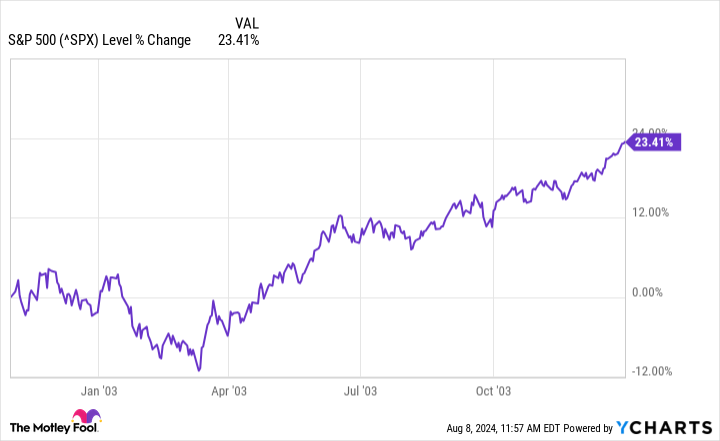
Four years went by with no changes to interest rates. However, the housing market crash in the second half of 2007 caused the Fed to shift into gear. It lowered rates in September 2007 and then continued to cut rates another six times through April 2008. These actions weren't enough to forestall a significant drop in the S&P 500.
Then came the stock market crash of October 2008. The U.S. economy was in a decline so bad that it became known as the Great Recession. The Fed cut interest rates by 0.5% twice in October, followed by a 1% cut in December. The S&P 500 initially plunged, but bounced back beginning in March 2009.
More than a decade came and went. The U.S. economy and the stock market roared back. However, in August 2019, the Fed began what Powell referred to as a "mid-cycle adjustment." It lowered rates by 0.25% three times, with the last cut on Oct. 31, 2019. The initial cut didn't seem to cause any stock market reaction. However, the S&P 500 took off after the Fed's October move.
The COVID-19 pandemic spurred the Fed to cut rates twice in March 2020. Although the S&P 500 still plummeted at first, it quickly rebounded.
Why the mixed results?
As we've seen, there have been mixed results in the stock market when the Fed has cut rates in the past. Why didn't the S&P 500 always jump on what should have been viewed as good news by investors? It's complicated.
In some cases, the Fed's moves simply weren't enough to immediately offset severe economic or geopolitical challenges. For example, rate cuts weren't enough to calm investors after the 9/11 attacks or the stock market crash in 2008.
Other times, investors could have decided to wait and see if the interest rate cuts would make a big enough difference to warrant more optimism.
Also, the Fed often telegraphs its moves well in advance. When investors anticipate rate cuts, they can begin buying before they occur. The actual rate cuts could then become practically a non-event for the stock market.
Good investing ideas if a rate cut is on the way
The history lesson here is straightforward: Don't bet on stocks soaring solely because the Fed cuts rates. They might, but they might not. However, I think there are some good investing ideas if a rate cut is indeed on the way (whether in September or in subsequent months).
Long-term bonds usually increase when interest rates fall. The Vanguard Long-Term Bond ETF (NYSEMKT: BLV) is a smart way to play this trend. This exchange-traded fund (ETF) owns nearly 3,100 long-term bonds and has a low annual expense ratio of 0.04%.
I also like the Vanguard Small Cap Value ETF (NYSEMKT: VBR). Small-cap stocks often rise when rates are cut. Smaller companies frequently have a higher percentage of debt than larger companies do. Lower rates reduce their interest expenses.
Don’t miss this second chance at a potentially lucrative opportunity
Ever feel like you missed the boat in buying the most successful stocks? Then you’ll want to hear this.
On rare occasions, our expert team of analysts issues a “Double Down” stock recommendation for companies that they think are about to pop. If you’re worried you’ve already missed your chance to invest, now is the best time to buy before it’s too late. And the numbers speak for themselves:
Amazon: if you invested $1,000 when we doubled down in 2010, you’d have $18,673!*
Apple: if you invested $1,000 when we doubled down in 2008, you’d have $40,306!*
Netflix: if you invested $1,000 when we doubled down in 2004, you’d have $339,942!*
Right now, we’re issuing “Double Down” alerts for three incredible companies, and there may not be another chance like this anytime soon.
*Stock Advisor returns as of August 6, 2024
Keith Speights has positions in Vanguard Small-Cap Value ETF. The Motley Fool has no position in any of the stocks mentioned. The Motley Fool has a disclosure policy.
Will the Stock Market Soar If the Fed Cuts Rates in September? Here's What History Shows. was originally published by The Motley Fool

